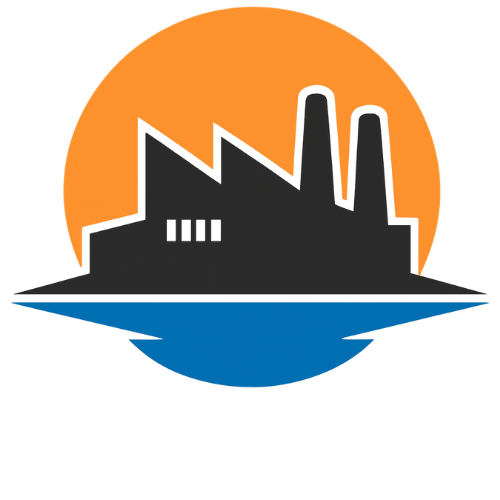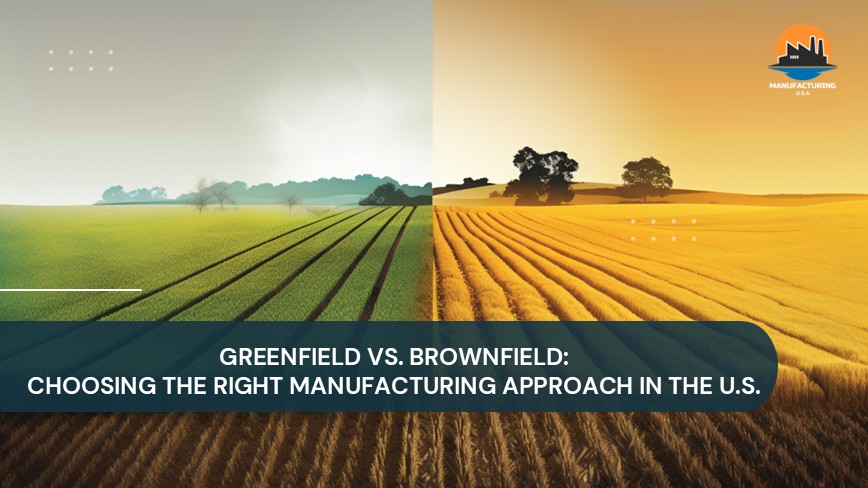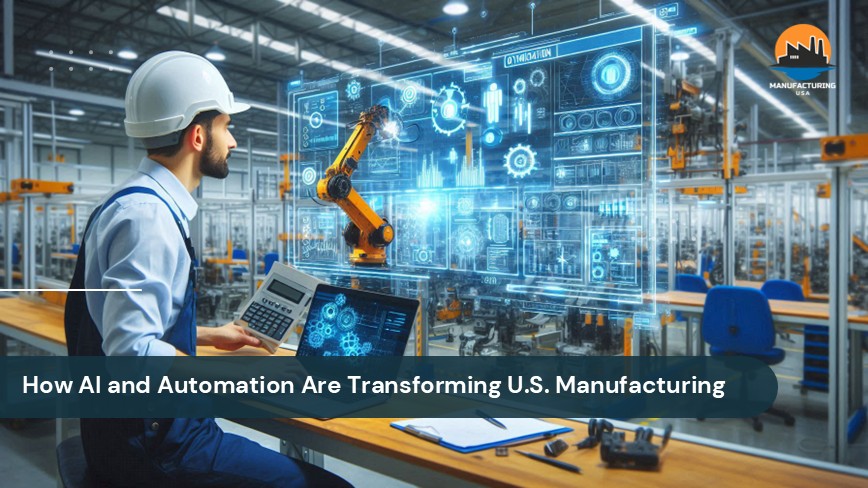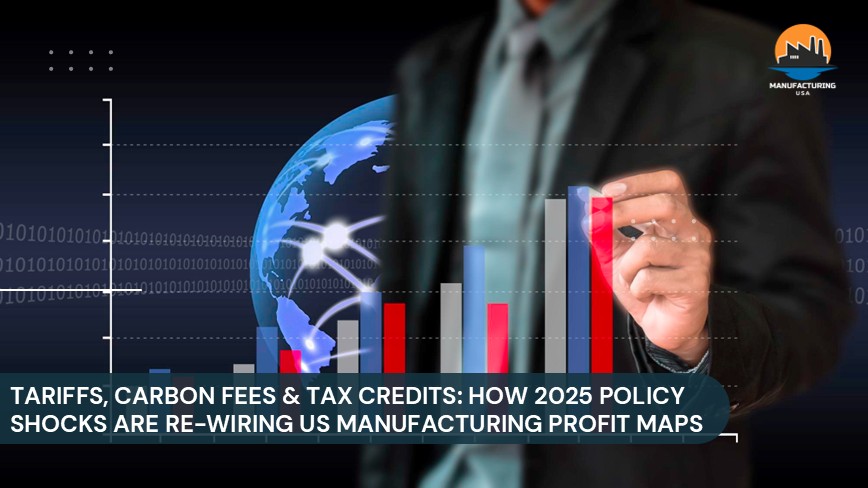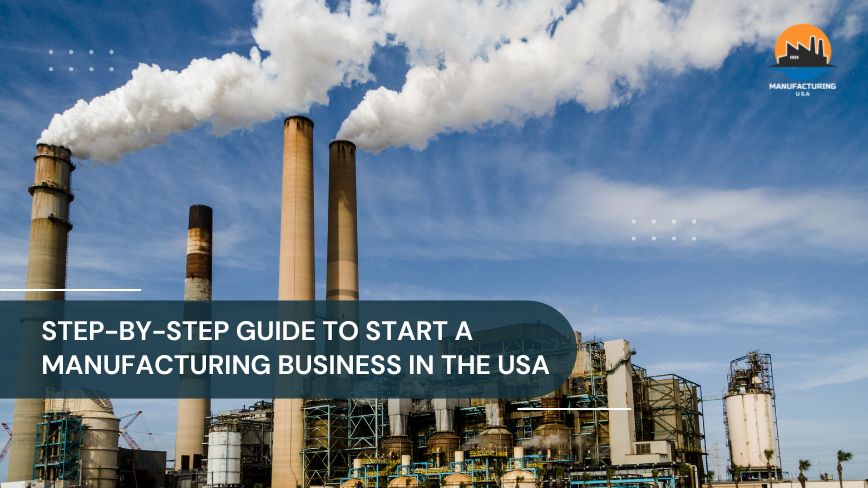The manufacturing landscape in the United States presents a unique set of opportunities and challenges for companies. As businesses consider entering the market, one of the most significant decisions they face is whether to pursue a Greenfield or Brownfield project. This choice is critical, because it affects key factors such as capital investment, operational speed, regulatory compliance, and the ability to scale efficiently. Understanding the nuances of each approach is essential for aligning with the specific demands of the U.S. market, ensuring companies can effectively meet customer needs while navigating local infrastructure, environmental regulations, and workforce availability.
In this blog, we will discuss the unique advantages and challenges that each approach offers. We will also explore the differences between Greenfield and Brownfield manufacturing projects, highlighting the factors that companies should consider when deciding which path to take in the U.S. market.
What is a Greenfield Project?
A Greenfield project refers to the establishment of a new manufacturing facility or operation on undeveloped land, where there are no pre-existing structures or infrastructure. This type of project allows companies to design and build their facilities from scratch, providing complete control over the layout, technology, and operational processes. Moreover, greenfield projects are often preferred when businesses want to tailor their operations to meet specific needs or when they require a modern, state-of-the-art facility.
Key Features of Greenfield Projects:
- Customizable Design: Companies have complete control over the layout, size, and design of the facility to meet their specific operational requirements.
- State-of-the-Art Infrastructure: Greenfield projects allow businesses to incorporate the latest technology, modern machinery, and energy-efficient systems from the outset.
- Location Flexibility: Companies can choose the most strategic location based on factors like proximity to suppliers, customers, and transportation routes, as well as local labour availability.
- Regulatory Compliance: New facilities are designed to meet current environmental, safety, and zoning regulations, which can help avoid legacy issues associated with older sites.
What is a Brownfield Project?
A Brownfield project refers to the redevelopment or repurposing of an existing industrial site or facility, typically one that has been previously used for manufacturing or other industrial purposes. These projects involve upgrading or adapting the existing infrastructure, buildings, and utilities to meet new operational requirements. Brownfield sites are often located in established industrial zones, making them attractive for businesses seeking to take advantage of existing access to transportation, utilities, and other infrastructure.
Key Features of Brownfield Projects:
- Existing Infrastructure: Brownfield sites often have pre-built infrastructure, such as roads, utilities, and buildings, which can reduce the time and cost of setting up operations.
- Faster Implementation: Due to the presence of existing facilities, Brownfield projects can generally be completed more quickly than Greenfield projects.
- Location in Established Zones: These sites are typically situated in industrial or commercial areas with easy access to transportation networks, suppliers, and markets.
- Renovation and Repurposing: Instead of starting from scratch, businesses adapt and upgrade existing structures to meet current operational needs and standards.
Key Differences between Greenfield Projects and Brownfield Projects
| Point of Difference | Greenfield | Brownfield |
| Site | Greenfield projects are built on new, undeveloped land, offering complete control. | Brownfield projects are developed on existing industrial sites that have been previously used. |
| Design Flexibility | Full control over layout and design to meet specific needs. | Limited by existing infrastructure and structures. |
| Initial Investment | Higher initial costs due to land acquisition and construction. | Lower costs as existing infrastructure is reused. |
| Setup Time | Longer setup due to construction and permit processes. | Quicker implementation due to existing facilities. |
| Infrastructure | Requires building new infrastructure like roads and utilities. | Can reuse existing infrastructure such as utilities and roads. |
| Environmental Issues | Typically, free from contamination. | Requires cleanup of contamination from past industrial use. |
| Regulatory Challenges | Requires new permits for construction and zoning. | Faces challenges related to site cleanup and permits. |
| Location | Allows for a strategically chosen location based on business needs. | Located in established industrial areas with existing access to resources. |
| Technology Integration | Easier to integrate modern technologies without constraints. | Require upgrades to accommodate modern technology. |
| Long-Term Flexibility | Highly flexible for future changes or expansion. | Limited flexibility due to existing site constraints. |
Advantages and Challenges of Greenfield & Brownfield Projects
| Project | Advantages | Disadvantages |
| Greenfield Projects | ü Complete Control Over Layout and Design
ü Integration of Advanced Technology ü Optimal Location Selection ü Environmental Cleanliness ü Flexibility for Future Expansion |
· High Upfront Investment
· Extended Setup Time · Increased Initial Costs |
| Brownfield Projects | ü Leverages existing infrastructure
ü Located in industrial hubs ü Compliance with existing regulations ü Faster setup with pre-existing structures ü Lower initial investment |
· Limited Expansion Flexibility
· Site Limitations · Potential Contamination and Cleanup |
Which Project Type is Right for Manufacturing in the United States?
- When considering these projects in the United States, factors such as business needs and strategic goals must be carefully evaluated. The primary advantage of Greenfield projects is the ability to choose an optimal location based on specific business requirements, such as proximity to suppliers, transportation routes, or target markets. Additionally, greenfield projects offer full control over design, layout, and infrastructure, allowing for seamless integration of modern technology and enabling future scalability. However, these projects come with challenges, including significant capital investment, longer setup times, and the need to comply with environmental regulations.
- In contrast, Brownfield projects offer a quicker, more cost-effective route, as they capitalize on existing infrastructure and structures. Likewise, the initial investment is typically lower, since the site already has roads, utilities, and buildings in place, reducing the need for extensive construction. Also, these sites are often located in established industrial zones, providing easy access to suppliers and markets. Regardless, Brownfield projects involve environmental cleanup and restrictions due to existing site constraints.
Industry Specific Consideration:
The specific needs of the manufacturing sector are critical in determining the most suitable approach. Various industries have unique requirements that significantly influence the decision-making process.
Automotive Industry:
- Generally, prefers Greenfield projects.
- Requires specialized facilities with advanced robotics, automation, and energy-efficient systems.
- Needs large, custom-built plants with ample space for assembly lines and storage.
Electronics Manufacturing:
- Frequently inclines toward Brownfield projects.
- Prioritizes cost-efficiency and quick setup.
- Benefits from repurposing existing sites in industrial hubs with established infrastructure.
- Allows faster market entry and lower upfront costs.
FMCG Sector:
- Requires rapid product turnaround and consistent output.
- Both the Greenfield and Brownfield approaches can be applicable.
- Greenfield projects are suited for large-scale, modern facilities.
- Brownfield sites are ideal for localized, smaller-scale operations leveraging existing infrastructure.
In conclusion, the choice between Greenfield and Brownfield projects in the U.S. depends on industry needs, supply chain considerations, and long-term objectives. Greenfield projects offer complete control over design, location, and scalability, while Brownfield projects provide a cost-effective and quicker setup. Therefore, businesses should balance the immediate benefits of faster implementation with the potential for long-term growth when selecting the most suitable approach.
